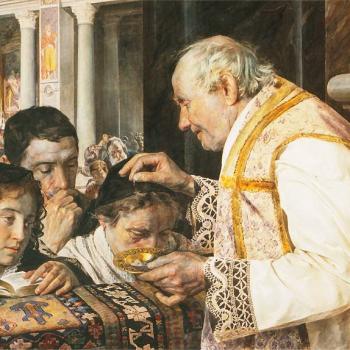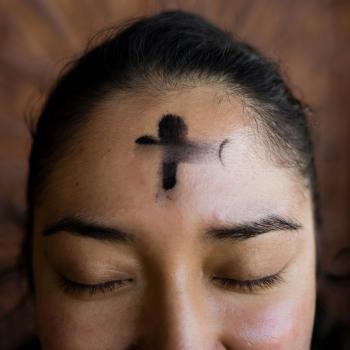 Consider your own calling … Not many of you were wise by human standards, not many were powerful, not many were of noble birth. Rather, God chose the foolish of the world to shame the wise, and God chose the weak of the world to shame the strong, and God chose the lowly and despised of the world, those who count for nothing, to reduce to nothing those who are something, so that no human being might boast before God. (I Corinthians 1:26-29)
Consider your own calling … Not many of you were wise by human standards, not many were powerful, not many were of noble birth. Rather, God chose the foolish of the world to shame the wise, and God chose the weak of the world to shame the strong, and God chose the lowly and despised of the world, those who count for nothing, to reduce to nothing those who are something, so that no human being might boast before God. (I Corinthians 1:26-29)
Fifteen years ago, as I was preparing for reception into the Church, I decided that I would attend daily Mass during Lent. Because I was unemployed at the time and my schedule “flexible,” I usually attended the 9:00 AM at St. Brendan Church. I sat in the same place every morning, about twelve rows back on the left side of the center aisle, precisely two rows behind a woman who, I came to realize, was in constant pain. At the time, I had no idea what the source of her discomfort might be, but every movement was clearly an agony, and though she was relatively young, her progress into and out of the pew was slow and labored, like that of a very old person. And yet, every day she was there without fail, always before I arrived and usually lingering while I walked out the door.
Believe it or not, you can learn a lot about someone just staring at the back of their head. For instance, as the days went on I noticed that this woman did something quite unusual at the conclusion of the Gospel, during the congregational response, “Praise to you, Lord Jesus Christ.” While speaking those words, she would invariably swivel her head to the right and nod, as if in acknowledgement of someone walking up the aisle. For weeks I attempted to figure out the significance of this movement, which she executed with mathematical precision and ritual solemnity. It seemed to make no sense to me. At first I wondered if perhaps she was merely daft, and whether this motion might just be some sort of tic. But she never repeated it at any other time during the Mass, and when I had occasion to look her in the eye I saw a fierce and controlled intelligence there. Then I thought that perhaps it was a by-product of her physical condition. But again, the motion wasn’t repeated during any other liturgical response, even those that unquestionably involved greater exertion. Then I thought that it might be some sentimental gesture toward a seat or a pew, perhaps where a now-dead friend or relative had once sat. But I had no evidence of this, and anyway, she executed the movement in a rather mechanical and unsentimental fashion.
Then one day I connected the dots. I realized that when speaking the words, “Praise to you, Lord Jesus Christ,” she was turning to address the tabernacle. But that’s not right either. No one in their right mind addresses a brass tabernacle. No, she was in fact addressing the divine resident of the tabernacle, Jesus, truly present in the Blessed Sacrament reserved within. I was thunderstruck. It made all the sense in the world even as it convicted me that although I had accepted the doctrine of the Real Presence conceptually, I hadn’t yet grasped it as a tangible reality. While I was saying the words of the response into thin air, this woman, overwhelmingly conscious of Christ’s genuine physical presence in the room, was simply addressing him, as any polite person would do.
A few months later I saw this woman sitting with her husband in a restaurant. After screwing up my courage I approached them, introduced myself as a fellow parishioner, and asked if I could sit. I told her the story I’ve just related to you, and I thanked her for the gift of that gesture, and also for her example of one who, though in great pain, is faithful in even the littlest of things. She wept and explained that she suffered from lupus, and that she didn’t expect to live very long. She said my impromptu visit had given her a great sense of joy, and she thanked me. Sadly, I learned not long afterward that she had died. Although she is gone, her gift to me has persisted, because on the very day I figured out the meaning of her gesture, I adopted it as my own. In the years since, I have not attended a single Mass in which I have not turned my head toward the tabernacle and nodded profoundly as I said the words “Praise to you, Lord Jesus Christ.” And there has not been even one time I’ve offered that devotion without also thinking about the little lady with lupus.
“We adore you, O Christ, and we bless you, because by your holy Cross you have redeemed the world.”











